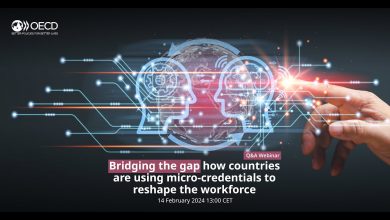Government Identity 3.0: Decentralized Citizen Identity in the Era of the Web 3.0 Economy
Identity and Blockchain Technologies Offer Governments the Potential to Build Out ‘Digital Public Infrastructure’ and Accelerate Economic Growth.
 Governments across the world are implementing digital identity metasystems that facilitate the core login functions and enable interoperation between online applications.
Governments across the world are implementing digital identity metasystems that facilitate the core login functions and enable interoperation between online applications.
Examples include the UK Government’s identity scheme, the ‘DIATF‘ – Digital Identity and Attributes Framework, which enables and implements ‘One Login for Government‘.
Eight agencies are now using the platform, such as the Disclosure and Barring Service, Department for Business and Trade, HM Revenue and Customs, HM Land Registry and Social Work England, with driving licences and passports used for identity checking.
The EU plans to launch a digital identity wallet that will serve as a single point of access for individuals to manage and control their digital identity. This wallet will allow users to store and share their personal information securely, eliminating the need for multiple usernames and passwords across different online platforms.
Government ID 3.0
The EU initiative defines how Government Identity schemes are beginning to overlap with the world of Blockchain and Web 3.0, defining Identity 3.0.
Digital Wallets are a keystone feature of this new economy, featuring as the common component in other scenarios like crypto currencies, with users increasingly willing to use them for identity verification.
The digital identity wallet will be based on decentralized technology, ensuring that individuals have full control over their personal data. It will also comply with the EU’s strict data protection regulations, providing users with peace of mind regarding the security and privacy of their information.
The OpenWallet Foundation is a consortium of companies and non-profit organisations collaborating to drive global adoption of open, secure and interoperable digital wallet solutions. In this webinar they explore the Future of Digital Wallets.
From money to credentials for identity, academic achievements or your driver’s license, information is manifesting itself as digital tokens requiring secure and interoperable infrastructure as never before. Part of that infrastructure is specific to custody; consequently, the development of secure wallet architecture is as vital as the development of the digital assets themselves.
This approach is also recommended by the OIX, who called upon the UK Government to work toward a digital wallet strategy, proposing that Governments should allow approved private sector digital wallets to hold official credentials rather than issue their own, provide clarity on how ID will work across the public and private sectors, and take leadership on cross-border identity interoperability.
 Supercharging Innovation – Building Blocks for Digital Public Infrastructure
Supercharging Innovation – Building Blocks for Digital Public Infrastructure
Writing for TechUK Wiggin’s Kristian Hall and Marcus Bagnall propose that the UK could lead this field of innovation.
They describe how NFT verification would work by associating crucial identity information with digital tokens, thereby providing users with a trustworthy and tamper-proof representation of their online identity, and blockchain smart contracts could ensure secure, autonomous data sharing.
OneID, a digital identity solution provider, also defines the potential economic benefits for the UK through advancing these capabilities, and how it can better support the goals of economic growth, reduced fraud and increased efficiency of public services.
They make the key observation that Identity is a keystone foundation for ‘Digital Public Infrastructure‘:
“Digital Public Infrastructure is an approach to solving socio-economic problems at scale, by combining minimalist technology interventions, public-private governance, and vibrant market innovation.”
Common examples include the Internet, mobile networks, GPS, verifiable identity systems, interoperable payments networks, consented data sharing, open loop discovery and fulfilment networks, digital signatures, and beyond.
In many other countries, such as Estonia and India, Digital Public Infrastructure (DPI) has been adopted to give a solid baseline for growth and security. The ‘public’ infrastructure can be privately funded and publicly used, which saves taxpayers the cost of building it. Although DPI helps nations deliver to the UN’s sustainable goals, it applies equally to any developed nation as an enabler of growth and inclusion. Beyond network infrastructure (mobile, broadband), DPI typically consists of three key layers; payments, identity and data sharing.
There is now a broad consensus that a ubiquitous digital identity scheme is the core foundation to the full development of a digital economy. For example, a McKinsey study5 found that digital ID can enable a 3% GDP uplift (a £61bn gain for the UK, every year) and also concluded that:
“In our seven focus countries, extending full digital ID coverage could unlock economic value equivalent to three to 13% of GDP in 2030 — if the digital ID programme enables multiple high-value use cases and attains high levels of usage.”



